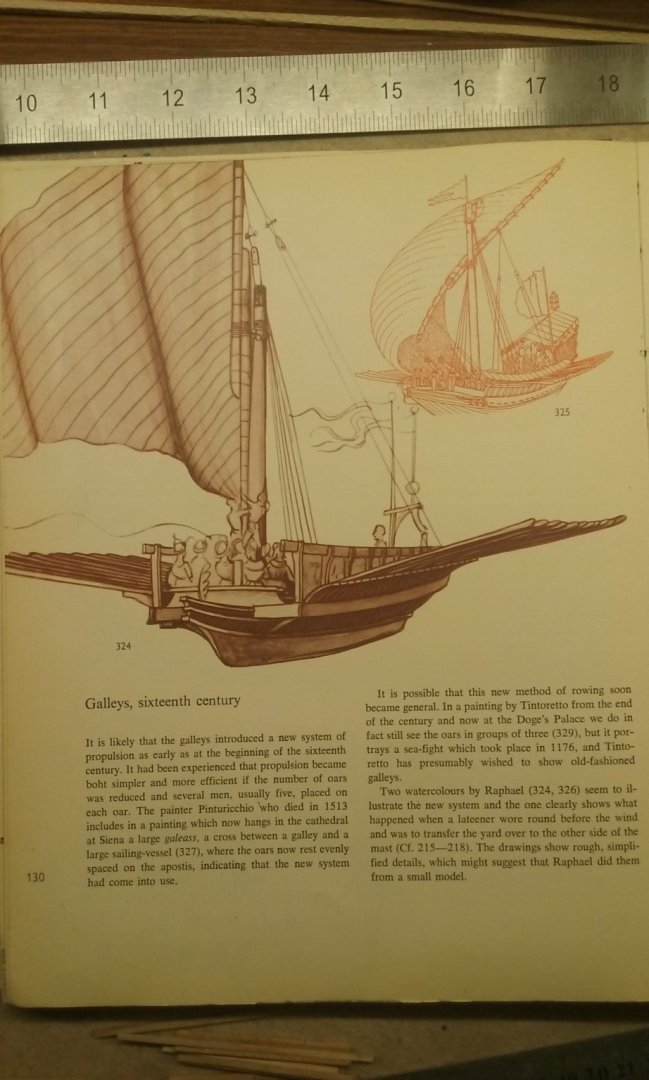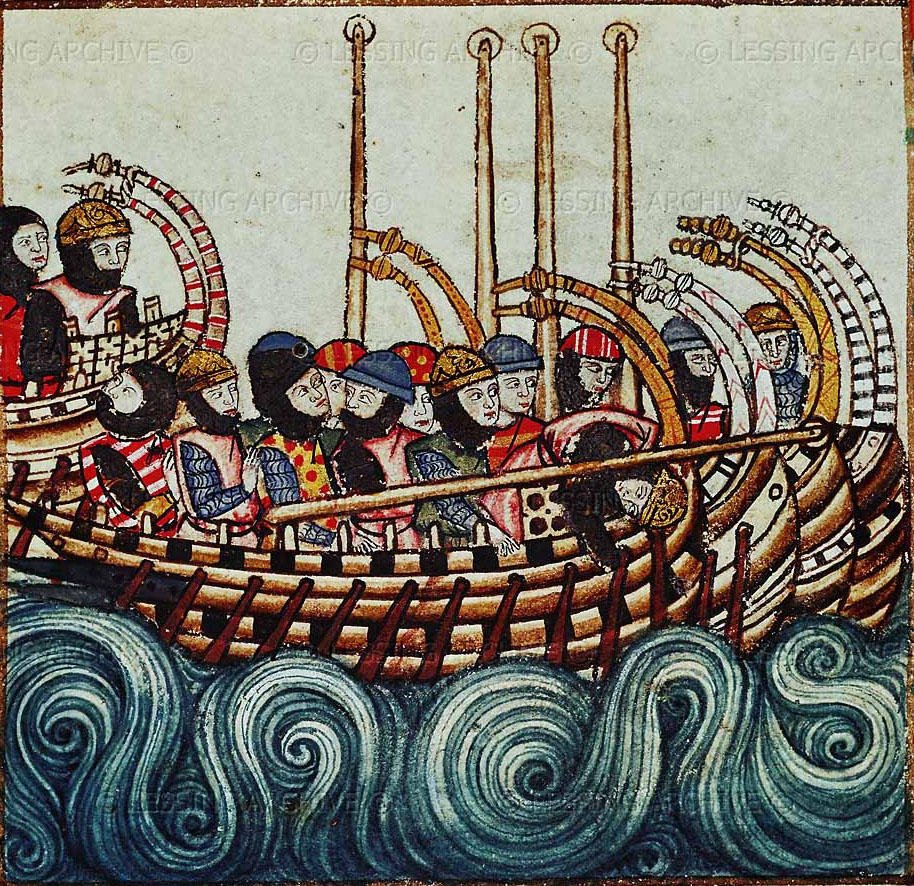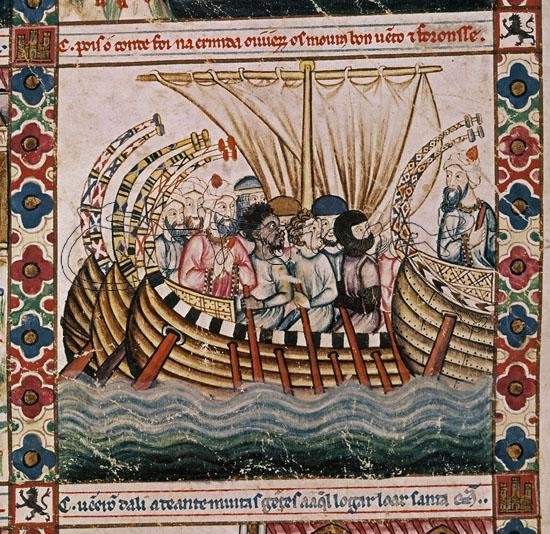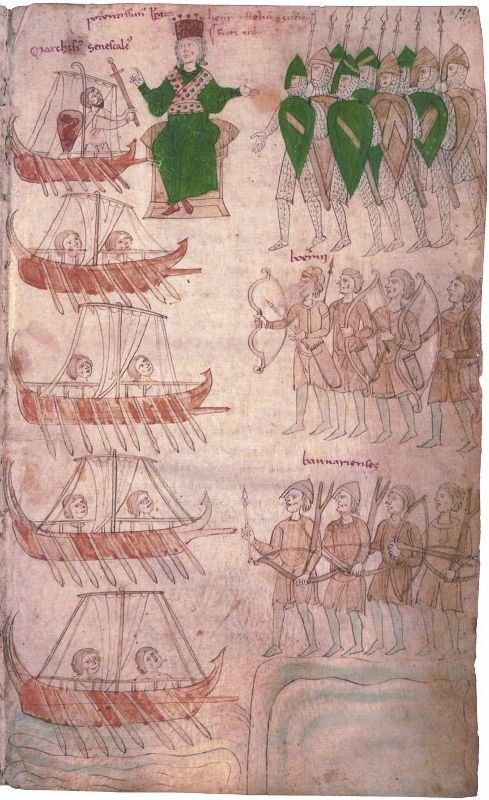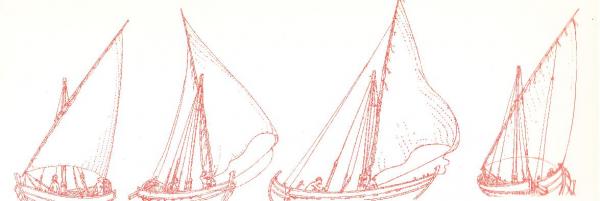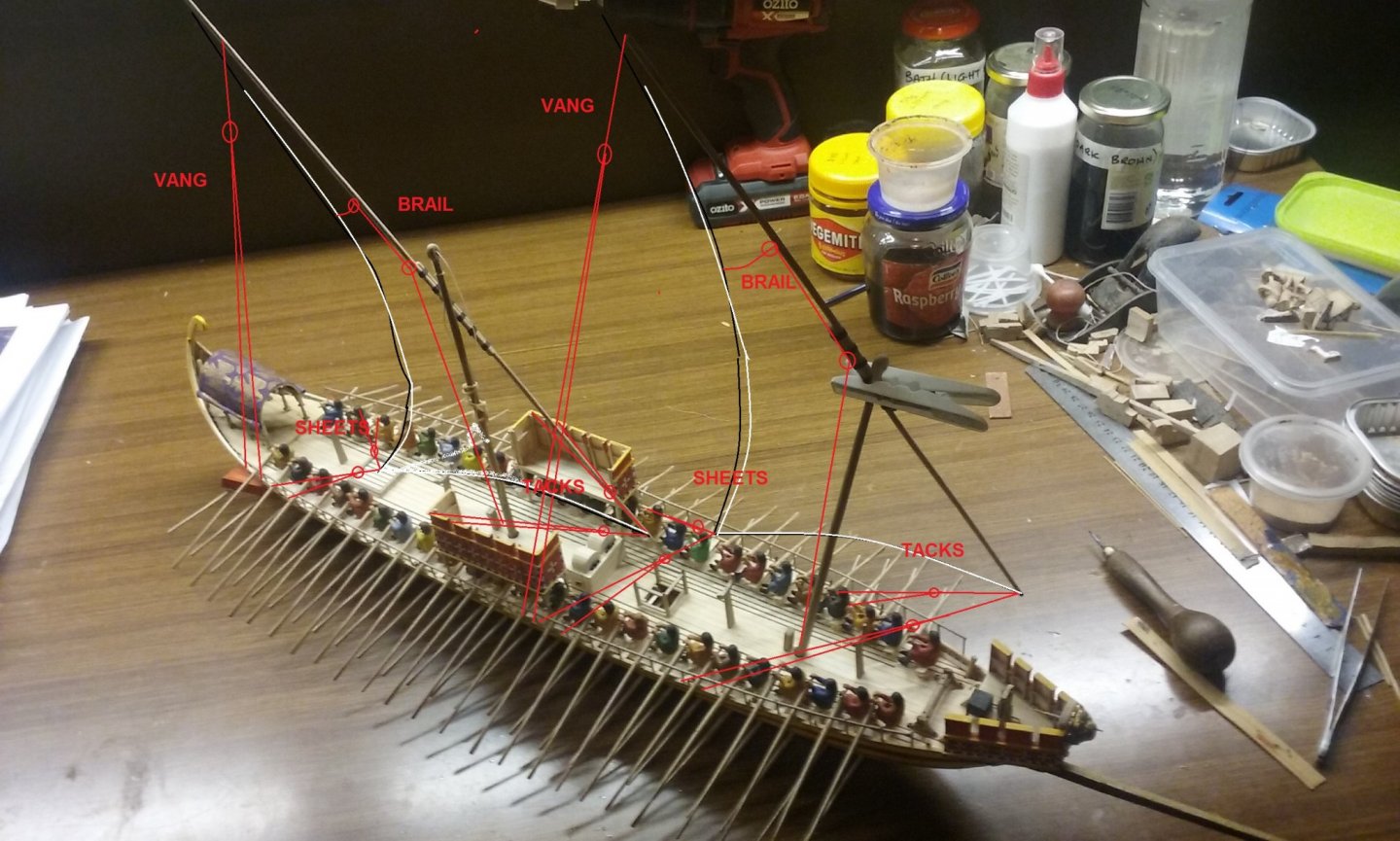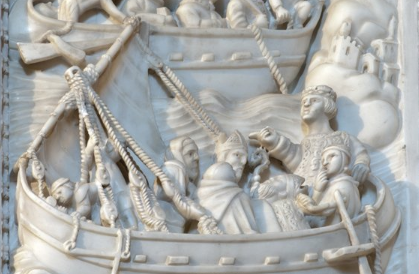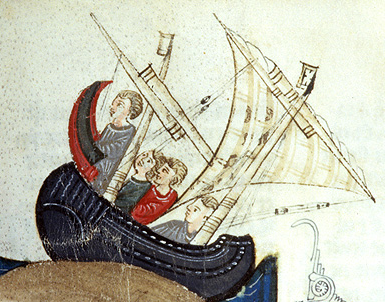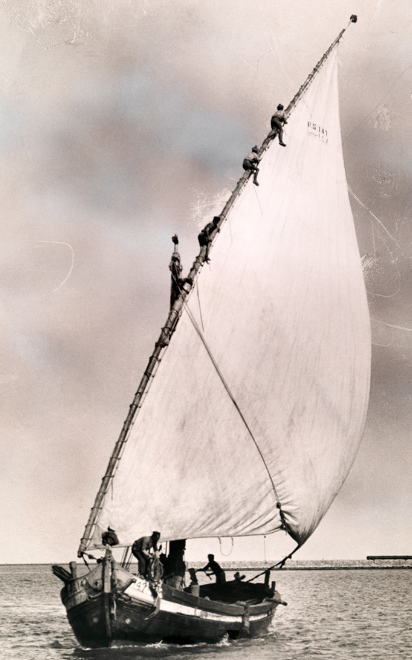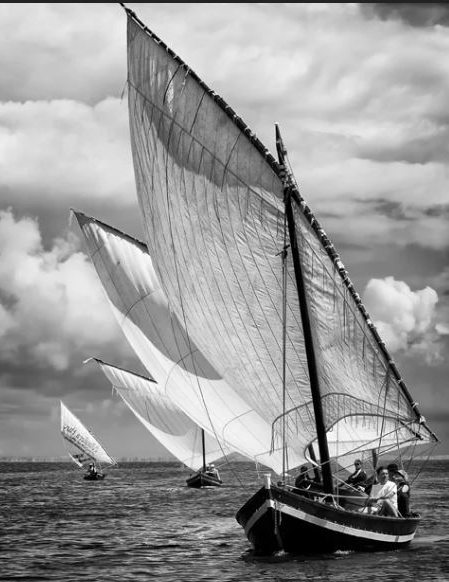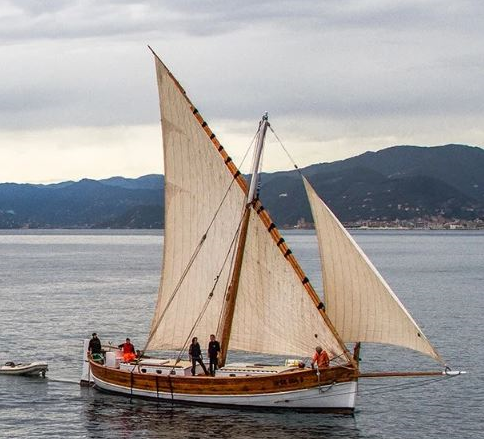-
Posts
7,985 -
Joined
-
Last visited
Content Type
Profiles
Forums
Gallery
Events
Everything posted by Louie da fly
-
Thanks for that information, Binho. I didn't know about that. I wonder if there were differences in construction depending on when the ship was built, as well?
-
Thanks, Liteflight. I'm still thinking about the final configuration, but I have to say the guys hoisting the sail is appealing to me more and more. Oh, yes, I can see myself doing that - Quninquireme of Nineveh from distant Ophir, Rowing home to haven in sunny Palestine, With a cargo of ivory, And apes and peacocks, Sandalwood, cedarwood, ... Um . . . the song is alouette (lark), not allumette (matchstick). Makes much more sense that way. Apparently was used to teach soldiers French during WWII. It's a bit graphic, though, if I understand the words correctly - Lark, pretty lark, I'll pluck you . . .
-
Looking really good. I'm looking forward to seeing what you do with the ocean and the weathering.
- 211 replies
-
- prince of wales
- tamiya
-
(and 2 more)
Tagged with:
-
I'd agree with you, Mark. However, in Björn Landström's book The Ship there's a copy of a 16th century watercolour by Rafaello (no, not the turtle) showing a galley (almost certainly just as unstable as a dromon) doing just that. It would take a fair bit of skill, I should imagine, to reduce the suddenness of the force as the sail changes position. But my experience in sailing is so minimal that I can only theorise. Landström is of the opinion that this watercolour was done using a model, but I'm hoping we can assume Rafaello actually did paint a manoeuvre he'd seen in real life.
-
Glad to be of service.
-
That's a fairly ambitious first build, though certainly quite a few people have started on something that complex and succeeded. On the other hand, a whaleboat such as the Model Shipways one - there's a build log here - might be a better project to begin on and develop the skills which will stand you in good stead when you move up to bigger and more complicated things, without being too overwhelming to start with.
-
Welcome to MSW, Jim! When you start your build, make sure you also start a build log. It will give you access to advice and help from the members here as well as us getting to see your build in progress. Here'show to do it: https://modelshipworld.com/topic/24705-before-you-post-your-build-log-please-read-this-starting-and-naming-your-build-log/ And don't get too intimidated by other people's builds. There's a broad range of expertise here, from the complete newbie to people who can produce models of museum quality (and the latter seem to be amongst the most helpful people on MSW, I've found). Jump right in, and have fun with it!
-
Welcome to MSW, Aaron! I've done a bit of work with bone and horn myself. Earlier in life I did mediaeval re-enactment and I've made combs and other artefacts from antler, but nothing of the quality you're doing. Choose something simple to start off with. Too many people start on something hugely complicated and intricate, get frustrated and disappointed and give it up. But if you begin with a relatively simple model, get success with it, you can then go on to the more advanced models as your skills and understanding improve. And once you've decided what to make, be sure you start a build log as well, so others can see your progress and give help, encouragement and advice. The instructions on how to start one are here: And you may have noticed that there are sections of the forum for questions on specific aspects of a build,such as planking, sails and rigging etc. If you have a question, this is often the place to go.
-
Hi Salem, and welcome to MSW. There are instructional videos online. Google artesania latina swift 1805 instructions. There are quite a few videos out there - from a quick look through them it looks like you might have enough information just from these to be able to build the ship. When you start your build, make sure you start a build log as well. It's a great way to get help,advice and encouragement. (It also lets us see another beautiful model under construction). Instructions on how to start your log are at https://modelshipworld.com/topic/24705-before-you-post-your-build-log-please-read-this-starting-and-naming-your-build-log/ You're bound to make mistakes at some point or other. Don't get too disheartened by them; we've all been there. Most of them can be repaired - and those that can't - well, treat it as a learning experience which you can apply to your next model. The members here are very supportive and helpful. And have fun with it - that's what it's all about.
-
Welcome to MSW, Lynn. A number of ex-archers here, apparently (including me). Yes, when you start your build, make sure you also start a build log. It's a great way to get help, encouragement and advice. And the problems you encounter may already have been solved by someone else.
-
Well, I'm afraid I'm waffling a bit whether to have the sails set. Bigpetr's question got me thinking - do I know they used the sails while they were rowing, did I read that somewhere, or is it just an assumption on my part? If I can't remember where I got the idea, maybe I'll never be sure I have it right. So I did a bit of investigating; unless I read all the way through Pryor's book Age of the Dromon I'm not likely to find the reference (if there is one). I'm prepared to do that, but it's going to take a while. In the meantime the pictorial record does provide some evidence. Here are some Byzantine representations of dromons with both oars and sails in use: from the 9th century Sacra Parallela BNF Gr. 923 f. 207r and the 12th century illustrated copy of the Synopsis Historion of Ioannis Skylitzes held in the Biblioteca Nacional in Madrid (yes, I do believe that's a sail). And one from the fifth century AD Roman Aenid of Vergil in the Vatican Library (Cod. Lat. Vat. 3867, fol. 77r) which is a little early, but a galley is a galley . . . the 12th century Spanish Cantigas de Santa Maria, and the late 12th century Italian Liber ad honorem Augusti (f. 131) However, there are also plenty of contemporary pictures of galleys, and not only in combat, without sails set, and in most cases without the masts either. The first two from the Synopsis Historion, the third from the Cantigas de Santa Maria and the fourth from the 12th century Byzantine Sermons of Gregory of Nazianzus, (Pantaleimon Cod. 6 f. 183r.) So, where does this leave me? There seems to be enough evidence to justify having the sails hoisted while the oars are in use - unless the artists just decided "Hey, we've got oars and sails - let's show everything!" However, I'm also up against the problem that when I laid the whole thing out - hull, superstructure etc - belaying points were the furthest thing from my mind. So one pair of shrouds fouls the midship castles, and I'm really not sure if the same thing won't happen with the running rigging. Perhaps I'll just have the thing under oars alone, with the masts and yards stored on their stands above the deck - it's still an option. I need to do some serious thinking about all this. In the meantime, today I've been cleaning up remnants of white glue. I'm a bit over-enthusiastic about slathering it all over the place (still better than when I was 17 - parts of the Great Harry are not a pretty sight). I've previously used rubbing alcohol (otherwise known as isopropyl alcohol or isopropanol) to dissolve glue to remove things I'd glued down, but Liteflight put me onto using it to remove gobs of glue. So this afternoon I got a bit of cloth, a toothpick and some isopropanol and started rubbing the messy bits of glue that detracted from the look of the model, particularly on the gunwale where the oars and pavesades were glued on. And it worked! Looks much better. A fair bit of elbow grease involved, but well worth it. So thank you, Liteflight.
-
Really enjoying the whole discussion but I have to say I'm also looking forward to the point when you move from the design phase into the actual building process (my coffee's getting cold ).
-
To be honest, I think it looks pretty good. Remembering that we're all our own worst critics, perhaps it's not as world-shatteringly terrible as you think. If it looks good in a photo (and they often exaggerate faults), I think you can probably feel safe that it's of acceptable quality.
- 74 replies
-
- mantua
- thermopylae
-
(and 1 more)
Tagged with:
-
You've done a beautiful job of her, Chris. That's really a model to be proud of.
- 28 replies
-
- airfix
- queen elizabeth
-
(and 2 more)
Tagged with:
-

HMCSS Victoria 1855 by BANYAN - 1:72
Louie da fly replied to BANYAN's topic in - Build logs for subjects built 1851 - 1900
WAAAAY outside my experience, but it's looking very good, and following the discussion is very interesting. I may never make a model from this period, but finding out the details is fascinating.- 993 replies
-
- gun dispatch vessel
- victoria
-
(and 2 more)
Tagged with:
-
It's looking good, Wayne. I don't think I'd have the courage to work with card. To me, wood is much more forgiving .
-
If you've been using PVA (white glue) you can dissolve it using "rubbing alcohol" (isopropyl alcohol),usually available from supermarkets in the "personal grooming" aisle. It works very well, so long as youallow it time to do its work (and sometimes you need to do it more than once). I use a Q-tip to apply it, but it might be better if you can find an applicator that is a bit more precise.
- 41 replies
-
- artesania latina
- dallas
-
(and 1 more)
Tagged with:
-
I wouldn't do a diorama for this model. I was thinking of doing one of something like the picture of Antwerp roads from 1515, but only a section of it, not the whole thing. And of course to a smaller scale than 1:50 . . . Two steersmen on a dromon, but sometimes they lifted one rudder from the water and just used one, depending on the conditions. "Raspberry stain"? That's Imperial Purple, I'll have you know - from the murex shellfish! (Actually, for something that size they wouldn't use murex to make purple - too expensive - just madder for red and overdye it with woad for blue.)
-
OK, now we hit the part I've been dreading -the rigging. I'm happy with the shrouds and halyards, but the rest of the running rigging has me a bit bamboozled. Unfortunately I really have trouble understanding all them ropes, and as this is a lateener, not a square rigger, there's no easily available information on how it all works. However, I've been studying a lot of mediaeval pictures (many of which are so oversimplified as to be completely useless and others quite informative), photos of modern lateeners (most of which are too small to have the problems and forces involved in something as large as a dromon), and some have bowsprits which hadn't been invented yet - though in several of them it doesn't affect the lateen sail anyway. and photos of dhows (when the sail is a lateen rather than a setee), many of which are big enough, but often the photos don't show the details I need to know about. Also models of lateen-rigged xebecs from MSW and elsewhere. There seems to be quite a bit of variation - some have no vangs, some have only one, some have two. Others have no brails, some have a single sheet (as far as I can see), some have two - and the same goes for tacks - some with one on each side, some (at least in the mediaeval pictures) have only a single tack. My two main questions are - have I covered all the ropes used in the running rigging? and - where are the belaying points? I've decided to use the tacking technique outlined in Landstrom's book The Ship, with the lee shrouds loosened and the lower end of the yard pulled back to the mast and pushed over to the other side, so the sail isn't fouled by the mast on the new tack. As far as I can make out, that would mean that the tacks would have to run back to belaying points quite a distance astern of the mast, so you could pull the fore end of the yard far enough back to pass around the mast. I've put together an annotated photo of my dromon with what I think is an acceptable layout (sorry for the messy background) . The white curved lines represent the sails, and the red lines are the ropes, with red ovals to represent blocks. The idea is to have a ringbolt as the fixed end of each rope and a cleat to belay the free end. Not sure if brails had been developed in the 11th century. Other than that, i hink I've got it as close as I can to the real thing. I'd appreciate comments and suggestions. I'm rather out of my depth in all this.
-
That sounds like a very worthwhile thing to do. A pity my Greek isn't good enough to appreciate it (actually, not even good enough to wade through it slowly and painfully). This could be a valuable addition to the knowledge of ships of this time - combining the clues from Homer with those from the vases.
-
Fascinating and illuminating discussion. This is a very worthwhile build to follow, as well as very enjoyable.
About us
Modelshipworld - Advancing Ship Modeling through Research
SSL Secured
Your security is important for us so this Website is SSL-Secured
NRG Mailing Address
Nautical Research Guild
237 South Lincoln Street
Westmont IL, 60559-1917
Model Ship World ® and the MSW logo are Registered Trademarks, and belong to the Nautical Research Guild (United States Patent and Trademark Office: No. 6,929,264 & No. 6,929,274, registered Dec. 20, 2022)
Helpful Links
About the NRG
If you enjoy building ship models that are historically accurate as well as beautiful, then The Nautical Research Guild (NRG) is just right for you.
The Guild is a non-profit educational organization whose mission is to “Advance Ship Modeling Through Research”. We provide support to our members in their efforts to raise the quality of their model ships.
The Nautical Research Guild has published our world-renowned quarterly magazine, The Nautical Research Journal, since 1955. The pages of the Journal are full of articles by accomplished ship modelers who show you how they create those exquisite details on their models, and by maritime historians who show you the correct details to build. The Journal is available in both print and digital editions. Go to the NRG web site (www.thenrg.org) to download a complimentary digital copy of the Journal. The NRG also publishes plan sets, books and compilations of back issues of the Journal and the former Ships in Scale and Model Ship Builder magazines.



